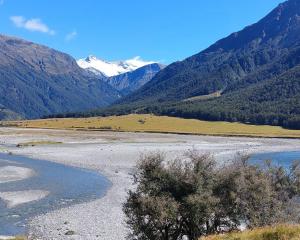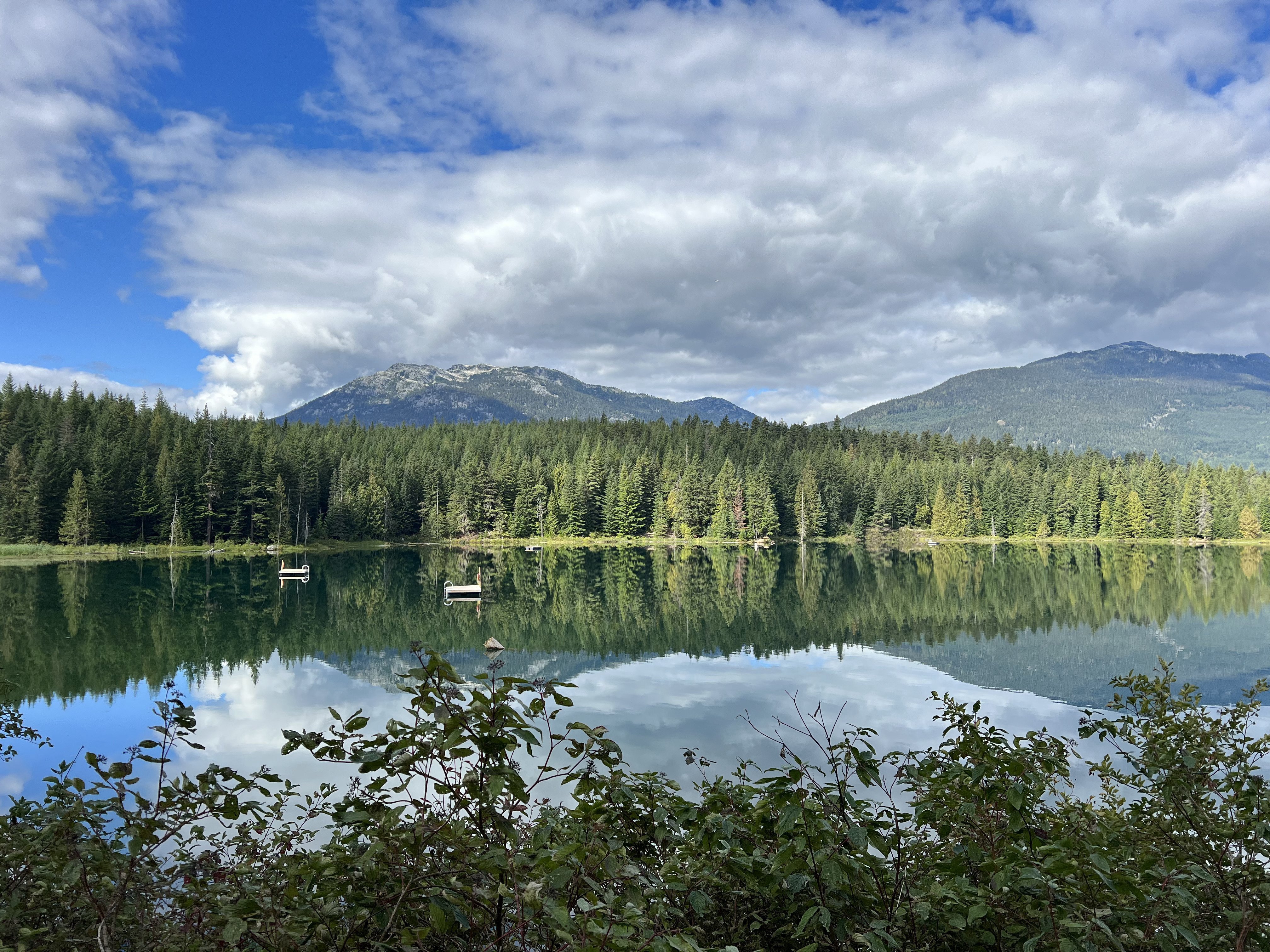
Canada has always been synonymous with vast mountainous terrain and natural beauty, undeniably one of the best destinations for adventure tourism.
British Columbia had been on my ‘‘must-visit’’ list for a long time, not just because of the countless hiking trails with beautiful old-growth forests, but also the stunning coastline that surrounds this area.
Other than extensive lakes, Canada has the longest coastline of any country in the world, being surrounded by the Atlantic, Pacific and Arctic Ocean.
Given its sheer size, it’s advisable to cherry-pick specific places and allow for more time than you’d imagine.
With direct flights from Auckland, the city of Vancouver is an ideal starting point and surprisingly easy to navigate. Where possible, book accommodation central or close to the city.
Vancouver would have to be one of the most cycle-friendly places you could visit, with dedicated lanes that wrap around the city’s coastline.
Curious to see what the city offers, I head to Cycle City Tours to join one of their excursions highlighting important historic landmarks.
Once known as Gastown, the city’s seaport served as an integral link between Asia and the Pacific, Europe and eastern Canada.
We start the ride on Waterfront Rd at Canada Place, the gateway for gigantic cruise ships resembling horizontal high-rises, headed for Alaska.
Throngs of tourists stand in lengthy queues clutching their luggage, waiting to board one of several vessels.
From here I can see Vancouver’s biggest ski resort, Cypress Mountain. It’s an impressive backdrop to the harbour and just a 30-minute drive from downtown.
Despite hearing about breathtaking views from the top, I politely decline the opportunity to tackle the Grouse Grind — an outdoor stair master with just 2830 steps to the peak.
Two historic bridges, known as Lions Gate and the Ironworkers Memorial Bridge, provide efficient access to the city’s North Shore and despite it being peak rush hour, the traffic moves freely.
After a quick bite at the Farmers Markets, we continue on to Coal Harbour and Stanley Park. The impressive 400ha public reserve is dotted with mature trees, flourishing gardens and a 9km seawall, ideal for runners, walkers and cyclists.
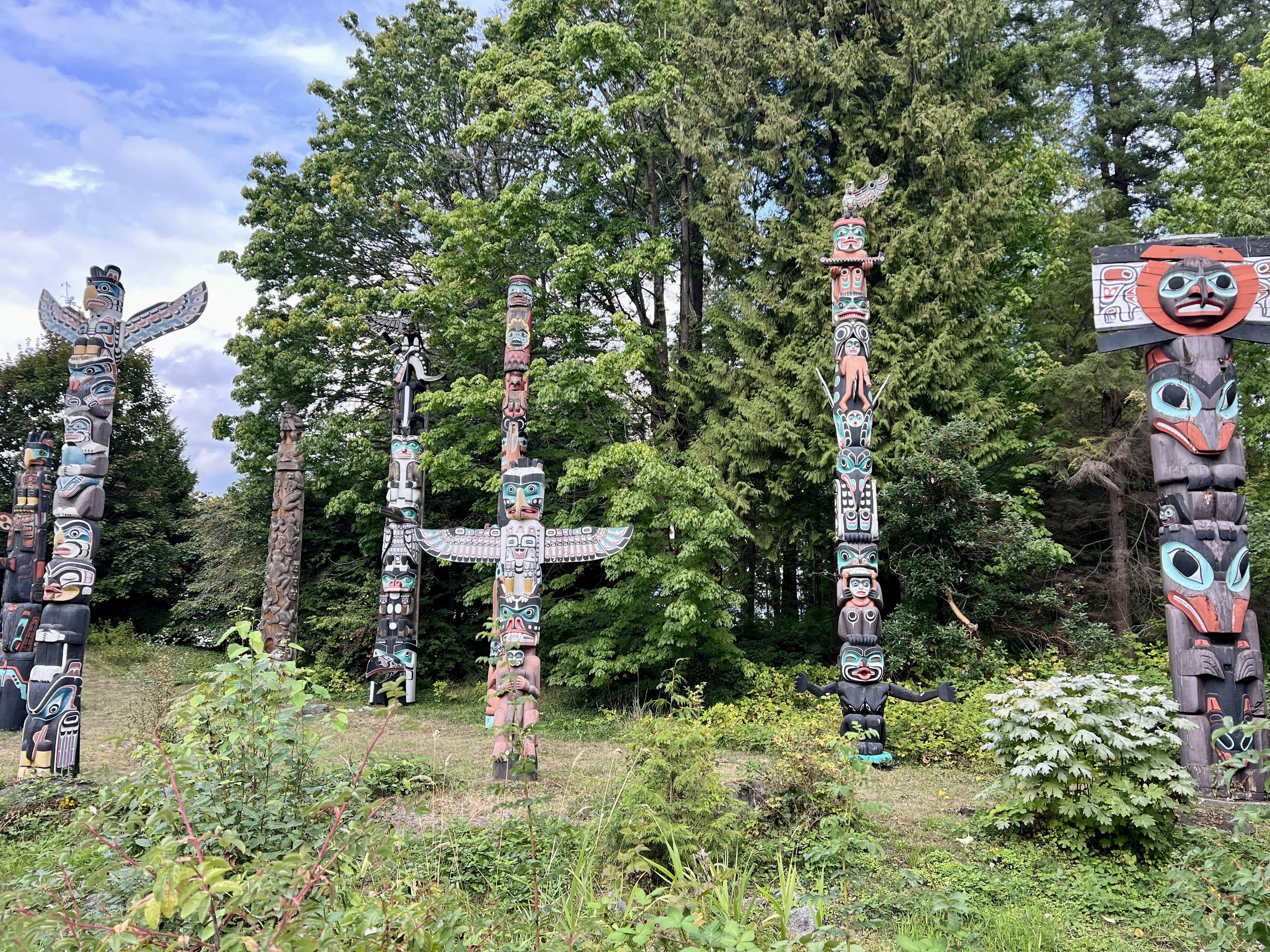
The eagle, regarded as king of the air, sits above the wolf, known as genius of the land and below it the whale, considered lord of the sea.
We cycle to Ferguson Point near Third Beach. It’s a pretty little bay known for the iconic Teahouse Restaurant. It would be easy to spend a couple of hours indulging in lunch and a bottle of wine here, but the tour guide has a pressing list of not-to-be-missed sights.
Many of the city road signs are in English and Squamish, the native language of the indigenous people.
Vancouver is the long-established territory of the Salish peoples (Squamish, Tsleil-Waututh Nation and Musqueam), who previously settled on the shores of the Pacific North West coast.
Like many countries, Canada’s history with regard to the recognition and inclusion of indigenous communities is inadequate, but there’s evidence that progress is being made to encourage these people into leadership roles within mainstream communities.
Birds are few and far between in this city, but the squirrels are prevalent, unsurprising given the number of trees.
Canada’s coastal rainforest is one of the largest in the world. However, much of the old-growth forests that included spruce, coastal Douglas fir and cedar, were decimated during the intensive deforestation period of the mid-19th century.
Approaching the harbour, we cycle in the direction of English Bay. This is an ideal place to hire kayaks and Sups to explore both Second Beach and Sunset Beach.
Canadian geese huddle on the grass verge alongside a selection of busy cafes and craft breweries.
I’m distracted by a couple of raccoons outwardly flirting under a canopy of trees near the beach. In a show of extreme athleticism, one of them — most likely the male — is repeatedly running up and down the side of a tree. It looks pointless and exhausting, but clearly impresses the female.
My gaze shifts to a Pacific heron standing still as a statue on a rocky outcrop waiting patiently for the glimmer of a fish.
We stop briefly at Sunset beach to watch a couple of overweight sea otters splashing in the shallows. It’s impressive to see marine life on beaches close to the city centre.
This area is known for its outdoor contemporary theatre interpretations, including ‘‘Bard on the Beach’’.
Cycling through the upmarket suburb of Yaletown alongside False Creek, the Olympic village comes into view. The packed marina is a sign of yachting’s enormous popularity in Vancouver.
Passing West Cordova, I note a number of restored brick facades with mosaic tiled entrances, a nod to Victorian grandeur from the past.
Heading along East Hastings St past the prominent Steam Clock on the western boundary of the old Granville Townsite, we reach the suburbs of Gastown and Chinatown and the tour takes a sudden shift. We have struck tent city.
Homeless people in their hundreds are sprawled across the footpath on filthy mattresses or holed up in makeshift tents.
Drug addicts lie across the kerb alongside discarded needles. Some shout aimlessly, trapped within the realms of their own worst nightmare. It resembles a scene from a zombie apocalypse film. I’m acutely aware of the overwhelming fetid stench of urine, rubbish and human decay in various forms.
It’s hard to conceive that just a few blocks from Vancouver’s high-end designer shopping and hotel strip, are essentially the saddest, most derelict slums that in part reflect a huge problem North America now faces, with drug addiction and homelessness.
Chinatown, once a thriving area for Asians who arrived during the 1880s to work on the railway line, is now a strip of boarded shopfronts, tattoo parlours and abandoned buildings, peppered with graffiti.
With the tour complete, it was time to hit the restaurant strip.
When it comes to sampling European, Asian and Pacific-style cuisine, you’re spoilt for choice in this city.
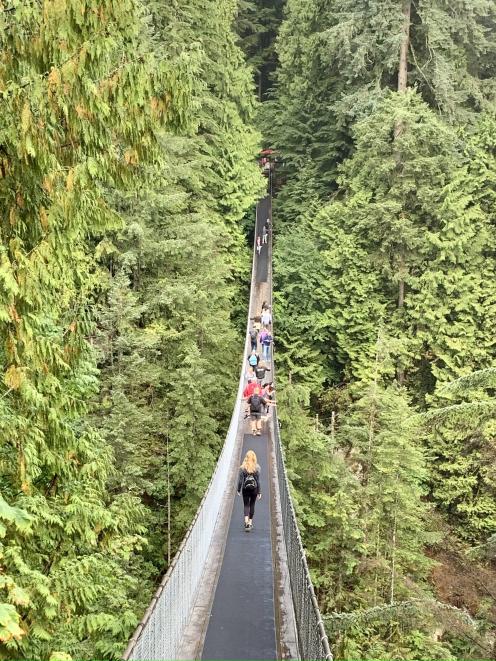
Being a fan of authentic Italian food, I make my way to Lupo, a traditional family-run restaurant based in a beautifully restored villa in Yaletown. It’s everything it’s touted to be and much more.
It’s a challenge to see all the highlights in just a few days, but the Capilano Suspension Bridge is a stand-out.
Over the past 100million years the Capilano Canyon, extending 1600km and finishing in southern Alaska, has been shaped by volcanic eruption, glaciers and wild rivers.
The original bridge, built in 1889, was crafted from cedar planks and hemp rope.
The subsequent upgrade is an impressively engineered structure. After stepping on to the walkway and literally suspended mid-air, I’m rewarded with a view that plunges 70m to the rushing Capilano River below.
In the same vicinity, the Living Forest and Treetops Adventure is arguably one of the most unique walks through the rarest type of temperate rainforest. Seven different suspension bridges attach to giant Douglas Fir trees, dating back hundreds of years.
It’s hard to eloquently describe walking among the treetops, but perhaps feeling as though you never want to come down explains it.
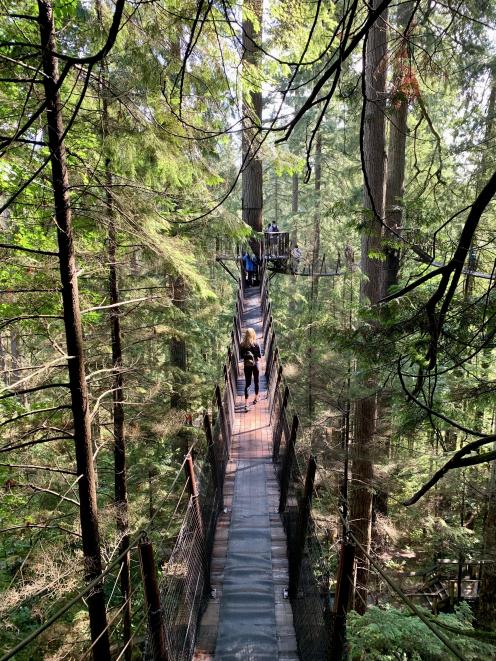
Although this area is largely known for its legendary skiing and snowboarding opportunities, I’m here for the hiking and mountainbiking trails.
After a quick scope around town with its numerous cafes, bars, restaurants and outdoor clothing boutiques, we head to the Gondola station.
From here we board the Whistler Gondola and the 10-minute ride stops at a midway point with commanding views of the adjoining peaks and glaciers.
Then it’s on to the Peak 2 Peak gondola, travelling up sheer mountainside some 436m above the valley, on what would have to be one of the longest rides at 4.5km between Whistler and Blackcomb Mountains.
After a solid hour hiking uphill over gravel and rocks, we reach the top. The clear blue sky was a bonus, providing unobstructed views to Cheakamus Lake and Black Tusk.
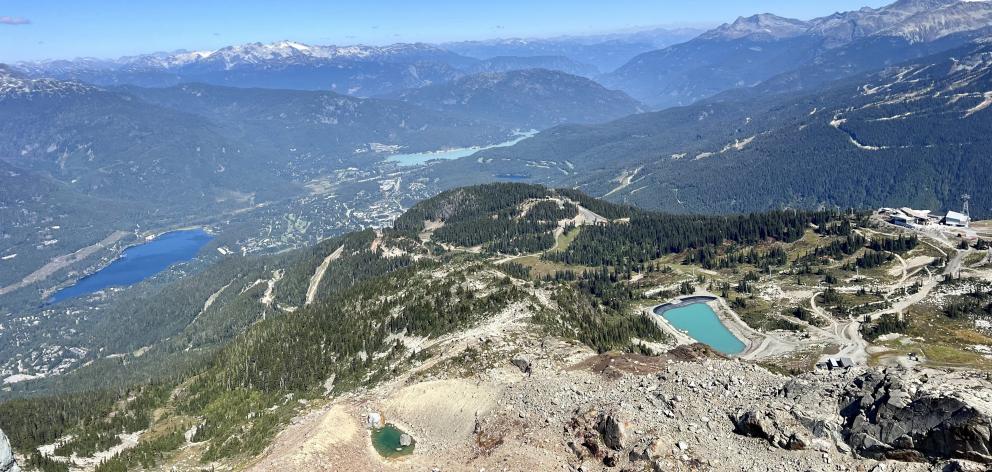
I make my way over, stopping to appreciate the impressive feat of engineering. Looking over the edge I catch an inquisitive face peering up at me from a rock below.
From where I’m standing it looks like a chubby dog in a big fur jacket, but I’m told it’s a hoary marmot, native to the area.
The hike downhill is easier and I pick up the pace with the knowledge I’ll soon be luxuriating in a thermal tub.
I’d read reviews and imagined the Scandinave Spa was unlikely to be as charming as the publicity spin.
The thermal pools are seamlessly integrated within the native bush and vary in temperature. I opt for the warmest one closely followed by a plunge in the icy cold pool, recommended to stimulate the nervous system and improve blood flow. Although deeply refreshing, it also gives me brain freeze.
With traditional sauna, steam rooms, massage therapy and a natural foods cafe, the spa was created to promote relaxation and mindfulness. Visitors are encouraged to take a digital detox and refrain from talking in the pools, enabling others to enjoy the peace and quiet
I indulge in the sauna and steam room, finishing with a remedial massage to work out the knots that occupy my entire body.
With the Whistler excursion almost done, we take a walk around the Lost Lake. It’s an ideal option for families or novice hikers, with various trails established on largely flat terrain.
We sit by the lake immersed in nature, only to be interrupted by a group of noisy hikers who enter the clearing, strip down naked and proceed to dive off the jetty.
Without a doubt Whistler lives up to the hype, especially given the natural beauty and proximity to Vancouver.
I vow to come back during the winter season to explore the mountains that encompass over 3200ha of skiable slopes and high terrain adventure.
In the interim, I’m headed back to New Zealand for a decent espresso.

